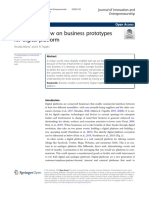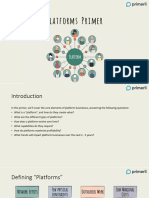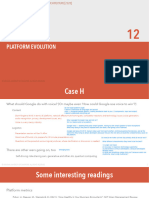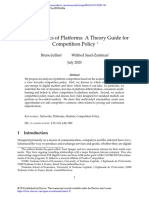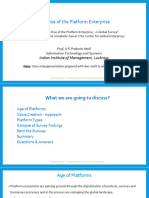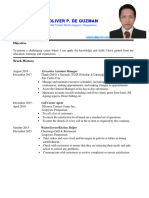0% found this document useful (0 votes)
49 views29 pagesLecture 6
The document outlines key learning objectives for a course on Innovation & Technology Entrepreneurship, focusing on platform strategies, including the balance between openness and control. It discusses the dynamics of platform economics, the importance of network effects, and the factors that contribute to the success or failure of platforms. Additionally, it includes a case discussion on WeChat's Red Envelope feature and its implications for business growth.
Uploaded by
Angus WuCopyright
© © All Rights Reserved
We take content rights seriously. If you suspect this is your content, claim it here.
Available Formats
Download as PDF, TXT or read online on Scribd
0% found this document useful (0 votes)
49 views29 pagesLecture 6
The document outlines key learning objectives for a course on Innovation & Technology Entrepreneurship, focusing on platform strategies, including the balance between openness and control. It discusses the dynamics of platform economics, the importance of network effects, and the factors that contribute to the success or failure of platforms. Additionally, it includes a case discussion on WeChat's Red Envelope feature and its implications for business growth.
Uploaded by
Angus WuCopyright
© © All Rights Reserved
We take content rights seriously. If you suspect this is your content, claim it here.
Available Formats
Download as PDF, TXT or read online on Scribd
/ 29




